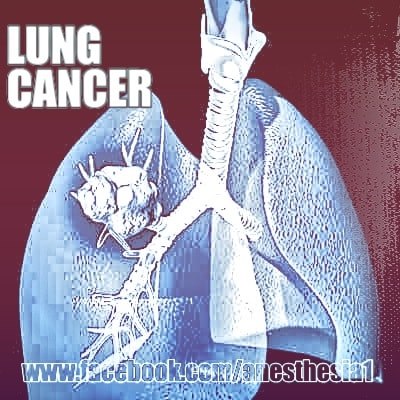Thoracics
LUNG CANCER
Resection of lung tumors is probably the mainstay of Thoracics Anesthesia. The surgical removal of these tumours is the most challenging of operations. They are often fraught with a multitude of complications and are quite a challenge for both Surgeon and Anesthetist. Indeed even the preoperative assessment can be tedious considering the size of patient folders one has to go through.
Well to make matters simple I found slotting the different types of tumours into categories does help.
Lung tumours are classified as
- Small Cell and
- Non Small cell
This possibly because the small cell is treated conservatively and the non small cell surgically.
I prefer to think of them as 2 types
Central and Peripheral
- The CENTRAL Types
located near the large airways
• Small Cell,
• Squamous Cell
• Carcinoid
A. SMALL Cell Carcinoma
• Fast Growth Rate
• Early metastasis
• Low survival -10%
• SIADH
• Eaton Lambert Syndrome
Chemotherapy and Aggressive radiotherapy is the mainstay
B. SQUAMOUS Cell
• Located centrally
• Tends to grow large
• Metastasis is late
• Ectopic release of PTH
• Hypercalcemia
• Notorious for mass effects - airway, great vessel involvement
Superior Vena Cava Syndrome
C. CARCINOID
• Benign
• No association with smoking
• Highly vascular
• 5yr survival >90%
2.The PERIPHERAL TYPE-
• Adenocarcinoma
• Large cell undifferentiated
A. ADENOCARCINOMA
• Most common tumour
• Early metastasis
• More likely to invade extrapulmonary structures
Chest Wall, diaphragm etc
• Pancoast Syndrome
B. LARGE CELL UNDIFFERENTIATED TYPE
• Less common
• Large
• Tends to cavitate
When assessing cancer patients always think of the 4 Ms
M - Mass
M - Metastasis
M - Medications
M - Metabolic Effects
(ie Paraneoplastic effects - SIADH)
